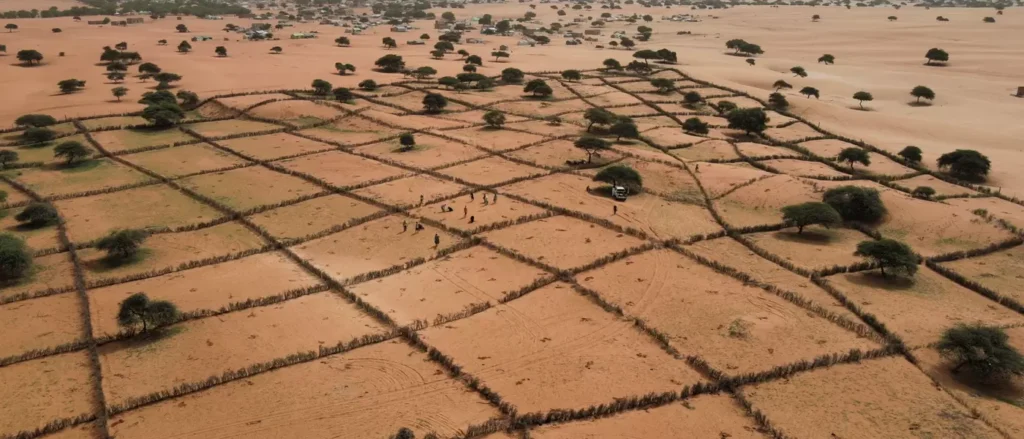
The United Nations has called on countries across the globe to seize the immense economic opportunities in land restoration, emphasising that rehabilitating 1.5 billion hectares of degraded land could generate a thriving trillion-dollar restoration economy.
Without urgent action, an area nearly the size of South America — around 16 million square kilometres — will continue to deteriorate by 2050, threatening livelihoods, food security, and global stability.
In his message for and Drought Day 2025, United Nations secretary-general, António Guterres warned that humanity is degrading land at an alarming rate, costing the global economy nearly \$880 billion each year – a figure far exceeding the investments needed to tackle the crisis. He urged governments, businesses and communities to honour global commitments on sustainable land use, reverse degradation and boost financing for restoration, including tapping into private sector funds.
This year’s global observance of Desertification and Drought Day was hosted in Bogotá, Colombia under the theme, “Restore the Land. Unlock the Opportunities.” UNCCD executive secretary, Ibrahim Thiaw described the occasion as a reminder of the immense social and economic benefits of reviving the world’s lands. He noted that with the global population set to reach 10 billion by 2050, competition for shrinking resources will intensify, threatening food security, clean water access, raw materials supply and, ultimately, global peace and prosperity.
According to the United Nations Convention to Combat Desertification (UNCCD), rehabilitating one billion hectares of degraded land could generate up to \$1.8 trillion every year, with every dollar invested potentially returning between \$7 and \$30 through enhanced ecosystem services and livelihoods. Despite this, land degradation and drought already drain about $878 billion from the global economy each year – three times the total official development assistance provided in 2023.
Sub-Saharan Africa bears the largest burden, with 45 per cent of the world’s degraded lands but also leads in restoration pledges. More than 440 million hectares are committed for revival, potentially creating 10 million sustainable jobs in agriculture and forestry, particularly across vulnerable zones like the Sahel. Latin America and the Caribbean hold the second-highest target, aiming to restore over 220 million hectares, demonstrating a robust commitment to revitalise critical landscapes. In Western Asia and Northern Africa, where nearly 90 per cent of the land is already degraded and communities face increasing heat, water scarcity and agricultural stress, more than 150 million hectares have been earmarked for restoration projects.
The main drivers of land degradation include deforestation, unsustainable farming practices and uncontrolled urban expansion, all exacerbated by climate change, poverty and overconsumption. Meeting the ambitious global restoration targets will require sustained funding, at least one billion dollars a day until 2030. Currently, the private sector contributes just six per cent of global restoration financing, highlighting the urgent need to increase private investment and innovative funding partnerships.
Colombia, this year’s host for the global observance, is actively integrating land restoration into its development and climate strategy. Nearly 30 per cent of the country’s land suffers degradation, with over 40 per cent of soils vulnerable to salinisation, impacting the livelihoods of one in ten Colombians. In response, Colombia is restoring over 560,000 hectares, expanding agroforestry systems and advancing rural land use planning. Recent years have seen collaborative efforts involving farmers, civil society and scientists working to restore watersheds, support sustainable coffee and cattle farming and improve soil quality, particularly in the Caribbean and Andean regions.
Colombia’s Minister of Agriculture, Martha Carvajalino underscored that equitable land distribution must go with healing damaged soils. She reiterated that around the world, restoring land secures food, jobs, climate resilience and biodiversity, while also fostering peace and democracy. UNCCD Deputy Executive Secretary Andrea Meza commended Colombia’s integrated approach, calling land restoration not just an environmental priority but an issue of environmental justice and stability.
This year’s observance is part of the broader Global Land Forum, co-hosted by Colombia’s Ministry of Agriculture and Rural Development, CINEP/Peace Programme, leading a national organising committee of civil society groups, the European Union and the International Land Coalition. Together, they aim to inspire concrete action so that healthy lands can sustain life, prosperity and peace for generations to come.

